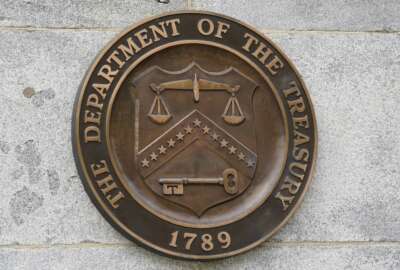USPS delivered mail-in ballots faster in 2024 than in recent years
As a result of its extraordinary measures, USPS delivered election mail faster than first-class mail.
The Postal Service, under scrutiny in the months leading up to Election Day, delivered mail-in ballots faster than in recent years.
USPS delivered at least 99.2 million ballots to or from voters during this year’s general election season, according to its post-election analysis report released Monday.
The agency’s performance generally matched its metrics for the 2020 general election and 2022 midterm election seasons.
But USPS, on average, took only one day to deliver ballots from voters to election officials. That’s faster than the 1.6 days USPS spent, on average, on that leg of ballot delivery in the 2020 general election, or the nearly two-day average it took in the 2022 midterm elections.
The agency delivered 97.73% of ballots from voters to election officials within three days, and 99.88% of ballots within a week.
Mail-in ballots accounted for nearly half of all ballots cast in the 2024 presidential election, but did not exceed the record 136 million mailed ballots USPS delivered to or from voters during the 2020 general election, when the COVID-19 pandemic forced states to expand vote-by-mail options.
Postmaster General Louis DeJoy said in a statement Monday that USPS “once again admirably performed our role of efficiently and effectively delivering the nation’s ballots.”
“As we continue to transform the nation’s postal network to better meet the demands of the modern mailing and shipping customer, we stand ready to work with policymakers at all levels to make the nation’s effective vote-by-mail process even stronger,” DeJoy said.
Overall, USPS delivered more than 222 million pieces of ballot mail since Jan. 1 this year, and about 3.37 billion pieces of political and election mail. However, election mail accounted for only 0.72% of total mail volume this year.
USPS, as it does ahead of every election, deployed “extraordinary measures,” such as prioritizing election mail ahead of other mail during processing, running extra truck trips between facilities and daily “all clear” checks to ensure all election mail is accounted for in the system.
Extraordinary measures began on Oct. 21, and continued nationwide through Election Day on Nov. 5. The agency, however, extended its extraordinary measures through the last day in each state that boards of elections accepted completed mail-in ballots.
As a result of these extraordinary measures, USPS delivered election mail faster than first-class mail.
USPS wrote that implementation of its 10-year Delivering for America Reform plan — including a nationwide overhaul of mail processing facilities — “did not adversely affect the Postal Service’s ability to deliver Election Mail in 2024.”
The agency earlier this year saw mail delayed in regions where it opened the first of its regional mail processing mega-centers, called Regional Processing and Distribution Centers (RPDCs).
DeJoy told Congress he would put many of these network modernization changes on hold at least through January 2025, to avoid delays during the election and year-end holiday season.
“Ahead of the 2024 election, the Postal Service used its discretion to avoid unnecessary optics or perception concerns, even when not related to new initiatives, and even when there was no real possibility that they would affect Election Mail performance,” USPS wrote in its report.
DeJoy and Amber McReynolds, the new chairwoman of the USPS Board of Governors and the head of its election mail committee, wrote that the 2024 presidential election was projected to be one of the closest races in history.
“This fact increased scrutiny on the entire national vote-by-mail ecosystem, with some critics asserting that the Postal Service lacked the capacity or ability to successfully deliver the nation’s Election Mail despite proven performance in past elections,” DeJoy and Amber McReynolds wrote.
In the months leading up to the election, the National Association of State Election Directors and the National Association of Secretaries of State raised concerns about USPS’s performance ahead of this year’s election.
The groups told USPS in a letter last month that over the past year, including this year’s primary elections, local election offices received mailed ballots days after the deadline to be counted — even though they were postmarked on time.
The Associated Press reported in mid-November that multiple election offices received mailed ballots that should have gone to other states.
While USPS holds regular meetings with election officials, agency doesn’t have a say in how nearly 8,000 election jurisdictions mail ballots out to voters or what deadlines they set.
USPS said local election boards mailed more than 150,000 ballots less than a week out from Election Day, and mailed out more than 31,000 ballots on Election Day.
“The Postal Service is mandated by law to deliver all mailpieces entered into the mailstream. However, when outbound ballots destined to voters are mailed by local boards of elections in the final days before the election, it is unrealistic to expect that the voter will be able to receive, complete, and return the ballot by mail to the local board of election by mail by Election Day or the state’s deadline,” USPS wrote.
Election officials also oversee the printing and design of ballots. DeJoy told members of the House Appropriations Committee in September that USPS sometimes gets ballots with wrong addresses on them, or ballots that can’t be run through its mail sorting machines.
“We’re a good target for a lot of blame,” he said.
Some states put an intelligent mail barcode on their ballots, which allows for the tracking of ballots throughout the delivery process.
While these barcodes aren’t required by law, DeJoy said they provide a level of standardization that makes it easier for USPS to deliver ballots.
“If every election board did that, if every state did that, we’d have a whole lot easier job making sure that we perform at that high level,” DeJoy told lawmakers.
The House last month passed the Vote by Mail Act. The bill, if passed by the Senate, would require all states to print intelligent mail barcodes on their ballots.
Copyright © 2025 Federal News Network. All rights reserved. This website is not intended for users located within the European Economic Area.
Jory Heckman is a reporter at Federal News Network covering U.S. Postal Service, IRS, big data and technology issues.
Follow @jheckmanWFED






